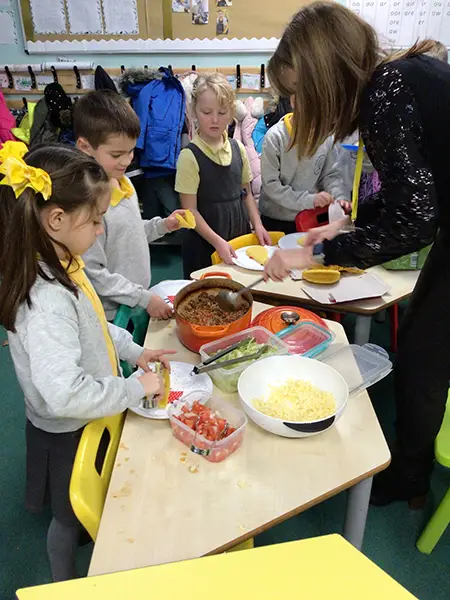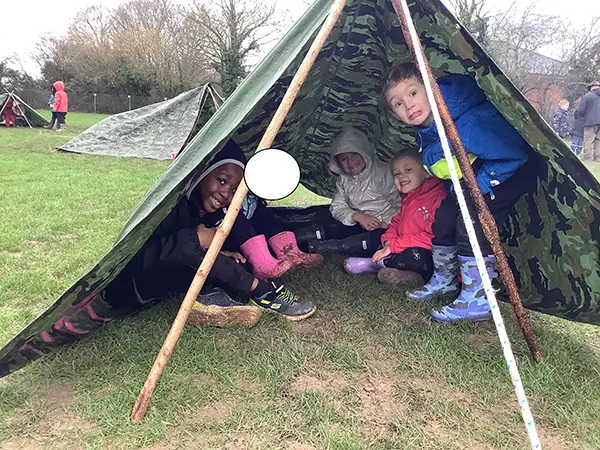- 0118 9883340
- admin@grazeley.wokingham.sch.uk
Design and Technology (DT)
Design and Technology provides children with a greater awareness and understanding of how everyday products are made allowing them to become informed future consumers as well as potential innovators.
Design and Technology (DT)
National Curriculum Purpose of Study
Design and technology is an inspiring, rigorous and practical subject. Using creativity and imagination, pupils design and make products that solve real and relevant problems within a variety of contexts, considering their own and others’ needs, wants and values. They acquire a broad range of subject knowledge and draw on disciplines such as mathematics, science, engineering, computing and art. Pupils learn how to take risks, becoming resourceful, innovative, enterprising and capable citizens. Through the evaluation of past and present design and technology, they develop a critical understanding of its impact on daily life and the wider world. High-quality design and technology education makes an essential contribution to the creativity, culture, wealth and well-being of the nation.
Whole School Definition of DT
Design and Technology is the development of skills and knowledge in design, structures, mechanisms, electrical control and a range of materials, including food.
“Design is not just what it looks like and feels like. Design is how it works.”
— Steve Jobs, co-founder of Apple, Inc.
Intent:
At Grazeley Primary School we aim to provide children with a Design and Technology education that is relevant in our rapidly changing world. We encourage children to become creative and imaginative problem solvers as individuals and part of a team. Children are encouraged to take risks and to be courageous, building up their resilience by making prototypes and adaptations. Pupils evaluate, design and make functional products to solve real and relevant problems, considering their own and others’ needs, wants and values.
Through the study of Design and Technology, children combine practical skills with an understanding of aesthetic, social and environmental issues. It provides children with a greater awareness and understanding of how everyday products are made allowing them to become informed future consumers. Through Design and Technology children model our school ethos of hope through the future as it gives them the tools to be potential innovators.
We value Design and Technology as an intrinsic part to STEM and links between these four subjects are made explicit to the children. We provide opportunities to take part in STEM learning, building skills they can apply to many fields of work in the future.
Substantive Knowledge
Substantive knowledge in design and technology is based on the knowledge of four key elements of the process of design.
Design: Know how to design a product that is purposeful, functional and appealing to a specific group.
Make: Know how to cut, join and finish a range of increasingly complex materials, ranging from paper to wood.
Evaluate: Know how to investigate, evaluate and analyse a range of existing products and their own designs based on a specific design criteria. In addition to this, children will know key individuals have helped to shape the world in which we live in.
Technical knowledge: Know how to apply their knowledge of specific materials to meet the criteria listed above in the design, make and evaluate stages.
DT Golden Threads:
Research Design Make Evaluate
Implementation:
Design Technology is planned through the Cornerstones Curriculum. The design and technology projects are well sequenced to provide a coherent subject scheme that develops children’s designing, planning, making and evaluating skills. Each project is based around a design and technology subject focus of structures, mechanisms, cooking and nutrition or textiles. Where possible, meaningful links to other areas of the curriculum have been made and history, science and geography links widen the depth and breadth of children’s knowledge. All the projects follow a structure where children are introduced to key concepts and build up knowledge and skills over time, using a more comprehensive range of equipment and building, cutting, joining, finishing and cooking techniques as they progress through school. Children study real life designers and makers and innovate independently for real life purposes.
Whole School Overview
Learning Journey
Each design project begins with a real-life context and purpose which often links to prior learning in history, geography and science. Children study and analyse the work of designers past and present before moving on to their own innovation. They may study specific technical techniques such as cutting, building or joining. Once they have planned and made their design they move on to evaluation.
Feedback and Assessment
Children get the opportunity to test out their designs in real life and compare them to their peers, making adjustments and tweaks based on feedback or peer and self-assessment. The ‘Evaluate’ part of each project allows children to self- assess their design more formally against their design criteria.
Impact:


Year Two making a simple healthy soup and Year Three made a beef chilli, using different cooking methods.


Year One children made a vehicle, exploring different ways to attach wheels using axles. Year Three used sliders, axles and cam mechanisms to make a simple toy.


Year One children made simple shelters and tested them. Year Five studied the features of Greek Architecture and used paper and card to construct temples.

